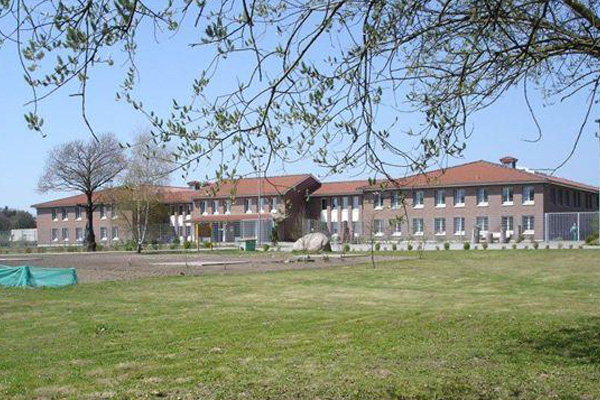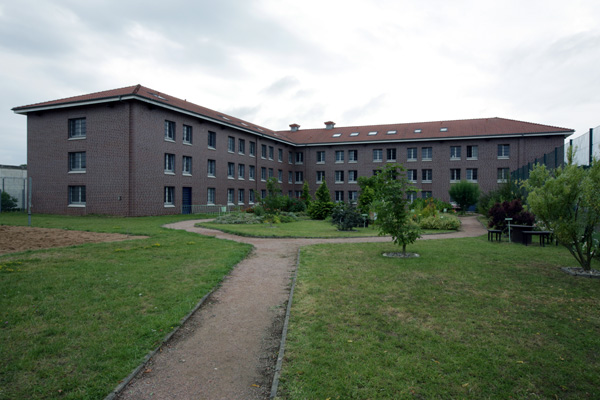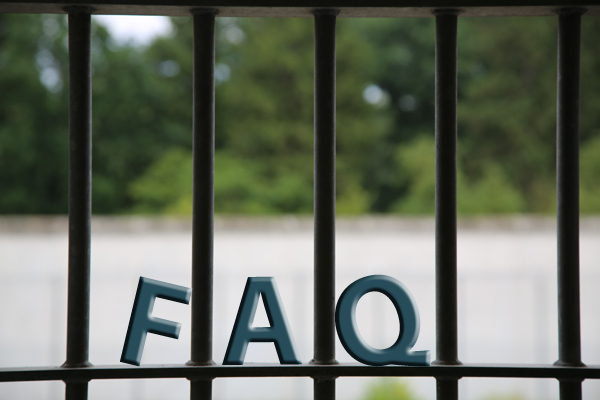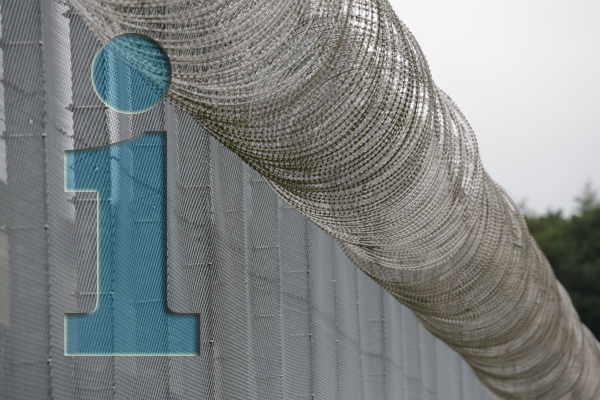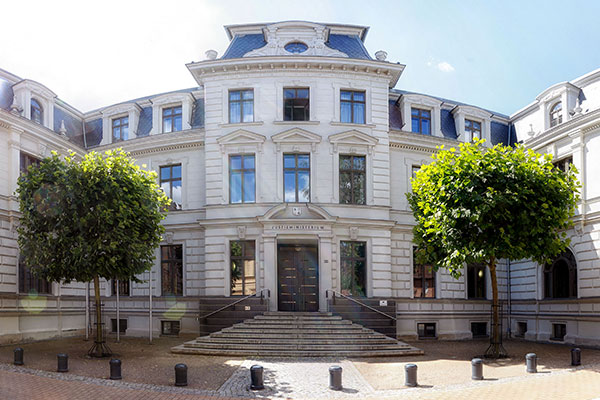facts in english
Brief information about the prison for male offenders in Waldeck
1. History of construction
- The Penitentiary was opened with three closed departments on July 1, 1996 (built within only two years)
- On July 1, 1998 the open department (constructed and built in two years) became operational
- In December 2004 the socio-therapeutic department in the closed area was opened
- In 2008 the diagnostic center in the closed department was installed
- All buildings are rented from an investment group (rent per month: 345.732,69 €). Contract lasts for the next 30 years. After this time the area could be bought by the government
- Size of area: 35.18 acres
2. Jurisdiction and crime
The Penitentiary Waldeck is responsible for the enforcement of sentences up to 4 years of adult and for the pre-trial detention for the district court circuit of Rostock.
For every prisoner an early release is possible if the prognosis is good.
The majority of the prisoners were convicted of violent or sex crimes, robbery, theft and fraud.
3. Internal distinction
There are 234 detention places in closed departments, 48 detention places in socio-therapeutic departments and 100 places in the open department of the institution.
In general, inmates are lodged alone in their rooms; only a few rooms are provided for a joint accommodation of two prisoners.
The aim of a prison sentence is to enable the detainee to lead his future life in social responsibility without committing any more crimes. In addition to this, enforcing a prison sentence means the public is protected against further crimes.
The closed correctional facilities are characterized by their structural and technical security measures, in particular enclosure walls, window grilles, special security doors to ensure safe accommodation of the detainees.
Direct and constant surveillance of the detainees, as soon as they leave their cells and stay somewhere else in the institution, is a general rule. The detainees‘cells are locked and open only at certain hours. Contacts with the outside world are restricted to supervised visits in the institution and supervised correspondence. Exceptions are vacation and permission to leave the institution for a limited period of time, which is granted to certain detainees who have qualified for this privilege.
These aims are to be achieved as follows:
Therapy and treatment are essential components of an integrative security concept.
Without treatment, an offender would inevitably continue with the same behavioural strategies which have led to his crimes after being released. That is why social rehabilitation is an effective contribution to crime prevention.
Prison officers form the biggest group of staff in the correctional facility. They are in charge of security, daily routine, laundry, meals, yard exercise. They look after the detainees in their leisure activities, treat their requests and organise visits. Furthermore, the staff consists of psychologists, social workers, street workers and volunteers. These are particularly important in their role to prepare the detainees for a well-regulated life after their prison sentence.
In the open penal system, the chances for social rehabilitation easily outweigh the risk of failure.
Special criteria to be fulfilled by detainees in the open system:
- Unrestricted willingness to cooperate
- Ability to behave correctly under minor supervision
- Open-mindedness with regard to socio-educational efforts
- The understanding that their own efforts are imperative
- Willingness and ability to integrate into communal life
Rehabilitation is the aim of the open penal system. This system is to counter possible damages caused by imprisonment. Certain relaxing measures (e.g. work outside of the institution) considerably facilitate the transition from imprisonment to freedom.
Prisoners should be detained in correctional facilities with open systems if they fulfil certain criteria and especially if it appears a justifiable risk to try whether they do not use this system to abscond from their prison sentence or to commit further crimes.
In the open penal system there are hardly any serious protection provisions preventing detainees from escaping. Structural and technical security only play a minor role. There is no direct and permanent surveillance for a detainee out of his cell. Escape is always possible, however the detainees are well aware that the only sensible thing is to complete their sentence. Failure rates are very low, whereas failure is primarily due to late return or disregard of instructions. Offenders rarely commit any crimes while in this system.
Prisoners are not required to agree to their detention in the open system. They are not supposed to have a choice. However, a refusal to be detained in the open system is to be taken into consideration when testing a detainee’s qualification for this system.
The socio-therapeutic department opened in January 2005, with the aim of considerably lowering the risk of repeat offenders. This objective is to be achieved by means of special therapeutic measures and social assistance. The socio-therapeutic department is primarily for detainees who should participate in the treatment programmes offered by the department to reduce their considerable dangerousness. The German Criminal Code (§ 17 StVollzG M-V) assumes a considerable dangerousness of offenders in cases where serious offences against life and limb, personal freedom or sexual self-determination are to be expected. In the socio-therapeutic department of Waldeck correctional facility there are 48 individual cells. One ward or living group consists of 12 detainees. The use of common rooms and extended “opening” (periods enables detainees to test themselves within a community. Two additional cells are available to former detainees from the department, who can request voluntary admission for a short period of time, in case of special crises and mental stress situations. The staff consists of a multi-disciplined professional team, which comprises 4 psychologists, 4 social workers and 16 prison officers. All of whom have received special training for this task. Their working guideline is based on the concept of integrative social therapy, first defined by Eger and Specht in 1980. According to this concept, integrative socio-therapeutic work is characterized by:
(1) Taking into consideration the entire living environment in and outside of the socio-therapeutic institution until release
(2) Creating possibilities for action and relationships within the socio-therapeutic institution in terms of a therapeutic community
(3) Modifying and combining psychotherapeutic, educational, practical and occupational-therapeutic methods
(4) Focus on criminal factors
(5) Emphasis on cognitive-behavioural group therapy.
A detainee’s stay in the socio-therapeutic department consists of three phases. The first phase of about four months is used for becoming acquainted with the detainee. During this phase, the detainee participates in an orientation group and regular meetings of the living groups, together with the other detainees and staff. Furthermore, each detainee is allocated one prison officer as a direct contact. In this first phase a first contact will be established with the detainee’s reference persons. At the end of this phase, the final decision on the admission of the detainee will be made and a therapy plan will be established. This plan contains the individual risk factors, the aim of the treatment and the treatment modules.
Subsequently, the therapy phase will start. The therapy phase can consist of, among other things:
| Treatment related to special offenses
| Treatment related to general offenses
|
| Work in living groups
| Leasure courses
|
| Work
|
|
If a detainee has successfully completed the most important elements of the treatment, there will be a transfer phase which is characterized by certain relaxing measures until the detainee is finally released. The detainee will be supported in his efforts to find accommodation and employment and when dealing with public authorities. In this phase, a first contact is established between the former detainee and the probation authorities. Furthermore, focus is centered around the protective social bonds of the detainee; family and contact persons are being increasingly integrated into the treatment, and the transfer of learned skills into the outside world is tested. In certain individual cases support will also be given to the detainee to enable him to seek further help, in the form of adequate follow-up treatment.

